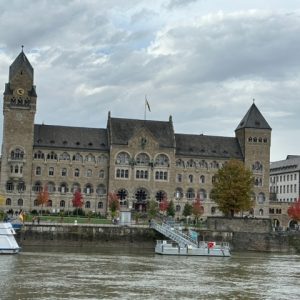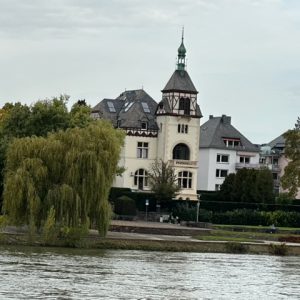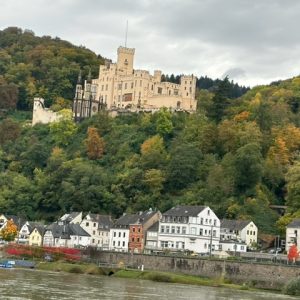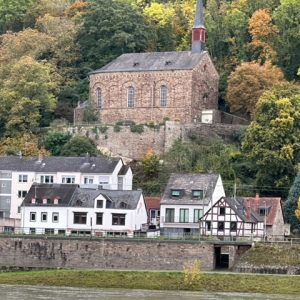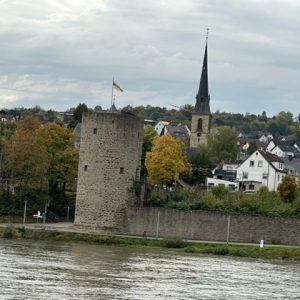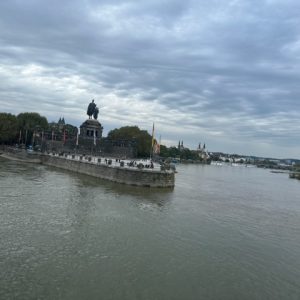Koblenz, Germany
Koblenz is a beautiful German town, located where the Moselle River disappears into the Rhine River. The actual confluence is known as the “German Corner”. Needless to say these two rivers are home to most of the great wines of Germany.
Sitting where these two great rivers meet means that Koblenz is a very beautiful, medium-sized city. It also has a great history. Around 1000 BC, early fortifications were erected on the Festung Ehrenbreitstein hill on the opposite side of the Rhine.
In 55 BC, Roman troops commanded by Julius Caesar reached the Rhine and built a bridge between Koblenz and Andernach. With the fall of the Western Roman Empire, the city was conquered by the Franks.
Although there are no visible vineyards near Koblenz, the wine walker (me) was very keen to pay homage to the Moselle and the Rhine rivers. So like most visitors, I took a 2-hour river cruise, which is a lovely way to see Koblenz.
The Moselle and the Rhine are truly grand rivers. The Moselle rises in the Vosges mountains and flows through north-eastern France and Luxembourg to western Germany. The name Moselle is derived from the Celtic name form, Mosela, via the Latin Mosella, a diminutive form of Mosa, the Latin description of the Meuse, which used to flow parallel to the Moselle. So the Mosella was the “Little Meuse”.
The train from Paris to Koblenz, passes through Luxembourg, and takes you up the Moselle Valley through many small towns and villages like Cochem, which are stunningly beautiful with vineyards climbing up the steep hill slopes.
For its part, the Rhine is the second-longest river in Central and Western Europe, after the Danube. It comprised much of the Roman Empire’s northern inland boundary. It begins in the Swiss canton of Graubünden in the southeastern Swiss Alps. It then forms the Swiss-Liechtenstein border and partly the Swiss-Austrian and Swiss-German borders.
After that the Rhine defines much of the Franco-German border, after which it flows in a mostly northerly direction through the German Rhineland. Finally in Germany, the Rhine turns into a predominantly westerly direction and flows into the Netherlands where it eventually empties into the North Sea.
For those of us interested in the physical and economic geography of wine walking, Koblenz is a must-see!
